The 2011 Space Elevator Games – Strong Tether Challenge was held yesterday, August 12th, at the 2011 Space Elevator Conference.
This competition is part of the NASA Centennial Challenges program, a program funded by Congress and run by NASA, with the purpose of fostering new technologies. Successful competitors are awarded prize money. For the Strong Tether Challenge, there is a prize pool of $2Million for any entry that meets all the benchmarks.
 NASA doesn’t run the competitions themselves. Instead, they partner with organizations who run the actual Games. These organizations set the rules (with NASA’s review and approval), they arrange the venue, they find the teams, etc. For the Strong Tether Challenge and the Power Beaming Challenge, the Spaceward Foundation is the organizing partner. These two competitions are packaged together by the Spaceward Foundation and labeled “The Space Elevator Games” as Power-Beaming and Strong Tethers are crucial components of building a Space Elevator.
NASA doesn’t run the competitions themselves. Instead, they partner with organizations who run the actual Games. These organizations set the rules (with NASA’s review and approval), they arrange the venue, they find the teams, etc. For the Strong Tether Challenge and the Power Beaming Challenge, the Spaceward Foundation is the organizing partner. These two competitions are packaged together by the Spaceward Foundation and labeled “The Space Elevator Games” as Power-Beaming and Strong Tethers are crucial components of building a Space Elevator.
When the competitions are held, NASA sends a representative to judge the results and to make the final determination as to whether or not a prize will be awarded.
This year’s strong Tether competition was held, as mentioned earlier, at the annual Space Elevator Conference. This is the third year that the competition has been held here and it seems to be a perfect venue. The facilities are absolutely first rate and there is already a gathering of space elevator enthusiasts and, this year, carbon nanotube (CNT) scientists and researchers.
 To actually test the tethers, you need a machine that stretches the tether to failure and records the value at which the tether broke. Spaceward built the machine that does this testing. A tether is mounted on the test rack. A hydraulic pump is then manually pumped, putting strain on the tether. When that tether breaks, the readout device shows the measurement of the level that the tether actually broke at. This measurement is then entered into a formula which also contains the length and weight values for that tether and final score is computed. If the score exceeds one of the prize benchmarks, then that tether is a prize-winner.
To actually test the tethers, you need a machine that stretches the tether to failure and records the value at which the tether broke. Spaceward built the machine that does this testing. A tether is mounted on the test rack. A hydraulic pump is then manually pumped, putting strain on the tether. When that tether breaks, the readout device shows the measurement of the level that the tether actually broke at. This measurement is then entered into a formula which also contains the length and weight values for that tether and final score is computed. If the score exceeds one of the prize benchmarks, then that tether is a prize-winner.
Two teams competed this year. One was an individual and first-time competitor in the Strong Tether Competition, Flint Hamblin. If that name sounds familiar to you, it’s probably because he was part of team which competed in the Power-Beaming competition some years back. Flint has decided to go after the tougher nut to crack, making a strong tether. The second team was Odysseus Technologies, Inc – a team which also competed last year.
 Flint brought three tethers to the competition. Each tether was measured (weight and length), put on the test rack, and then stressed until they failed. His first tether needed a score of 898 pounds, but broke at 153 pounds. The second tether needed a score of 948 pounds but broke at 264 pounds. The third tether needed a score of 452 pounds but broke at 154 pounds. The reason for the different metrics was that the tethers themselves were of different weights and length. The prize competition formula normalizes these measurements so that all tethers have an equal shot of winning. Flint’s tethers were made with off-the-shelf components plus some “secret sauce”. As a newbie in the competition, Flint stated he didn’t expect to win this year, but wanted some baseline measurements he can use to help judge future year’s results.
Flint brought three tethers to the competition. Each tether was measured (weight and length), put on the test rack, and then stressed until they failed. His first tether needed a score of 898 pounds, but broke at 153 pounds. The second tether needed a score of 948 pounds but broke at 264 pounds. The third tether needed a score of 452 pounds but broke at 154 pounds. The reason for the different metrics was that the tethers themselves were of different weights and length. The prize competition formula normalizes these measurements so that all tethers have an equal shot of winning. Flint’s tethers were made with off-the-shelf components plus some “secret sauce”. As a newbie in the competition, Flint stated he didn’t expect to win this year, but wanted some baseline measurements he can use to help judge future year’s results.
 The second competitor, Odysseus Technologies (headed by Dr. Bryan Laubscher), brought only one tether, but it was made out of carbon nanotubes. This tether however, broke at a very low level. It’s target score was 2,000 pounds, but it broke at just 11 pounds. This tether did not perform as well as the CNT tether that Odysseus brought last year, so obviously something adverse happened. Whatever it was, this means that we concluded another year of Strong Tether competition without awarding any prize money.
The second competitor, Odysseus Technologies (headed by Dr. Bryan Laubscher), brought only one tether, but it was made out of carbon nanotubes. This tether however, broke at a very low level. It’s target score was 2,000 pounds, but it broke at just 11 pounds. This tether did not perform as well as the CNT tether that Odysseus brought last year, so obviously something adverse happened. Whatever it was, this means that we concluded another year of Strong Tether competition without awarding any prize money.
 However, hope springs eternal. Attending the conference this year were Dr. Vesselin Shanov and graduate student Mark Haase of the University of Cincinnati and Dr. Boris Yacobson and Dr. Vasilii Artyukhov of Rice University. They were very enthusiastic about what they saw and expressed a strong interest in having their departments work on competition entry. With the resources they have behind them, this should provide a quantitative leap in the entries for next year.
However, hope springs eternal. Attending the conference this year were Dr. Vesselin Shanov and graduate student Mark Haase of the University of Cincinnati and Dr. Boris Yacobson and Dr. Vasilii Artyukhov of Rice University. They were very enthusiastic about what they saw and expressed a strong interest in having their departments work on competition entry. With the resources they have behind them, this should provide a quantitative leap in the entries for next year.
So, until 2012…
(Picture thumbnails: Topmost is Sam Ortega, one of the NASA representatives attending the competition. Next is Ben Shelef, principal of the Spaceward Foundation. As part of his introductory speech, he is showing a piece of a cable we obtained from the Puget Sound Rope Company. Next is Flint Hamblin, showing one of his tethers. Fourth is the carbon nanotube tether from Odysseus Techologies. And last is a picture of the two competitors. Dr. Bryan Laubscher from Odysseus Technologies is on the left while Flint Hamblin is on the right. As always, clicking on any of the thumbnails will give you a full-size picture).
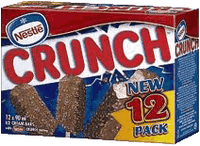 David Appell, PhD and independent science journalist, has penned an article about the Space Elevator, partly based on his experience attending last year’s Space Elevator conference in Redmond.
David Appell, PhD and independent science journalist, has penned an article about the Space Elevator, partly based on his experience attending last year’s Space Elevator conference in Redmond.
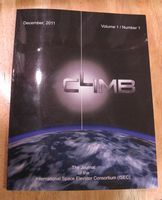

 Catching up on an older item here…
Catching up on an older item here…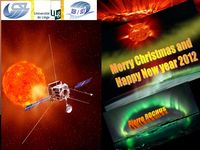
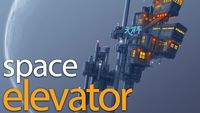 Over at io9, they have a
Over at io9, they have a 




 On Friday, August 12th, the next installment of the
On Friday, August 12th, the next installment of the 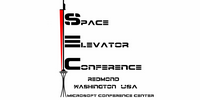 Friday, August 12th, marks the official start of the 2011
Friday, August 12th, marks the official start of the 2011 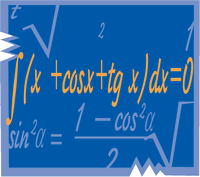 Long-time space elevator fan Maurice Franklin has created a very interesting document, the Space Elevator Analysis Spreadsheet. He explains it as follows:
Long-time space elevator fan Maurice Franklin has created a very interesting document, the Space Elevator Analysis Spreadsheet. He explains it as follows: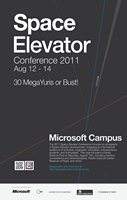 It’s still not too late to register – the 2011 Space Elevator Conference, to be held at the Microsoft Conference Center in Redmond, Washington, is only a few days away. This year’s conference is going to be very good and somewhat different in than in year’s past – an entire day, Friday, is going to be devoted to developments in the CNT arena – developments that are crucial to building a Space Elevator.
It’s still not too late to register – the 2011 Space Elevator Conference, to be held at the Microsoft Conference Center in Redmond, Washington, is only a few days away. This year’s conference is going to be very good and somewhat different in than in year’s past – an entire day, Friday, is going to be devoted to developments in the CNT arena – developments that are crucial to building a Space Elevator. As I
As I  This coming Sunday, July 24th, from noon to 1:30pm Pacific time, Dr. Bryan Laubscher will appear on Dr. David Livingstone’s The Space Show. Bryan will talk about the Space Elevator, the upcoming Space Elevator Conference, carbon nanotubes and other related subjects.
This coming Sunday, July 24th, from noon to 1:30pm Pacific time, Dr. Bryan Laubscher will appear on Dr. David Livingstone’s The Space Show. Bryan will talk about the Space Elevator, the upcoming Space Elevator Conference, carbon nanotubes and other related subjects. Tomorrow, Sunday, July 10th, is the last day for the “Early Bird” special rates for the
Tomorrow, Sunday, July 10th, is the last day for the “Early Bird” special rates for the 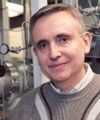 Dr.Vesselin Shanov is an Associate Professor of Chemical and Materials Engineering at the University of Cincinnati. He received his MS in Electronic Materials from the Technological University of Sofia, Bulgaria in 1970. In 1980, he completed his PhD in Solid State Chemistry at the University of Regensburg, Germany and at the Technological University of Sofia, Bulgaria.
Dr.Vesselin Shanov is an Associate Professor of Chemical and Materials Engineering at the University of Cincinnati. He received his MS in Electronic Materials from the Technological University of Sofia, Bulgaria in 1970. In 1980, he completed his PhD in Solid State Chemistry at the University of Regensburg, Germany and at the Technological University of Sofia, Bulgaria.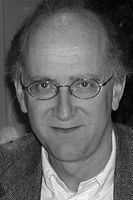 Dr. Yakobson received his PhD from the Russian Academy of Sciences in 1982. He is currently the Karl F. Hasselmann Chair in Engineering, a Professor of Materials Science and Mechanical Engineering and a Professor of Chemistry at Rice University.
Dr. Yakobson received his PhD from the Russian Academy of Sciences in 1982. He is currently the Karl F. Hasselmann Chair in Engineering, a Professor of Materials Science and Mechanical Engineering and a Professor of Chemistry at Rice University. the latest issue (July, 2011) of the National Geographic Magazine, you will find a short, 2-page article about the Space Elevator, complete with a custom-drawn, concept diagram.
the latest issue (July, 2011) of the National Geographic Magazine, you will find a short, 2-page article about the Space Elevator, complete with a custom-drawn, concept diagram.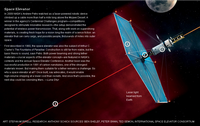
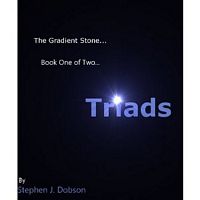 A new book (Triads, The Gradient Stone) themed around a Space Elevator is now available. From the abstract;
A new book (Triads, The Gradient Stone) themed around a Space Elevator is now available. From the abstract;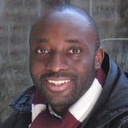 Mr. Uche Ogbuji (follow his Tweets at
Mr. Uche Ogbuji (follow his Tweets at 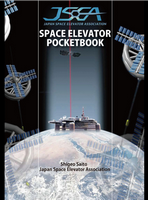 On a related note, I had
On a related note, I had 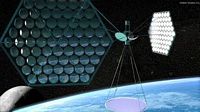 In the may
In the may  The
The 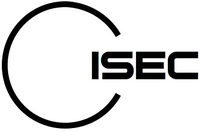 After over a year of work, ISEC is now officially recognized by the IRS as a 501c3 Corporation. What this means is that memberships in ISEC are now fully tax-deductible to the fullest extent allowed by law. And, it is retroactive to our corporate ‘start date’ (November 8th, 2008) so any and all contributions you made before are also deductible.
After over a year of work, ISEC is now officially recognized by the IRS as a 501c3 Corporation. What this means is that memberships in ISEC are now fully tax-deductible to the fullest extent allowed by law. And, it is retroactive to our corporate ‘start date’ (November 8th, 2008) so any and all contributions you made before are also deductible. Once again, all together now;
Once again, all together now;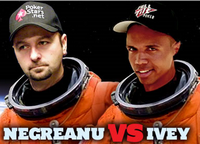 One of the activities we have going on right now at the
One of the activities we have going on right now at the 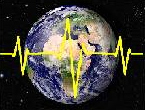 There is a new blog out there that I would like to inform all of my reader’s about – “
There is a new blog out there that I would like to inform all of my reader’s about – “ Previously, I
Previously, I 
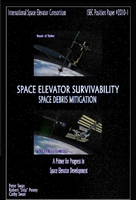
 Shuichi Ohno, the president of the
Shuichi Ohno, the president of the 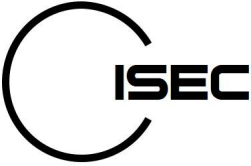 In 2010, ISEC announced the Yuri Artsutanov & Jerome Pearson prizes, prizes established to foster research into Space Elevator related topics. There were no winners in 2010, though we had two papers that qualified for Honorable Mentions in the Artsutanov Prize.
In 2010, ISEC announced the Yuri Artsutanov & Jerome Pearson prizes, prizes established to foster research into Space Elevator related topics. There were no winners in 2010, though we had two papers that qualified for Honorable Mentions in the Artsutanov Prize.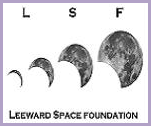 John Lee and his
John Lee and his  I was recently contacted by Tris Lucas of galaxyswan, letting me know that they have created a new Space Elevator song (titled, creatively enough, “Space Elevator”) and posted it on the web.
I was recently contacted by Tris Lucas of galaxyswan, letting me know that they have created a new Space Elevator song (titled, creatively enough, “Space Elevator”) and posted it on the web. ISEC’s
ISEC’s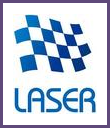 On November 21st, the Japan Space Elevator Association (JSEA) held another of their LASER (Lego bricks Activity and Space Elevator Race) competitions. Mr. Hideyuki Natsume, a Director at JSEA, informs me that 36 teams with more than 100 people participated and that the competition theme was “payload-juice can”.
On November 21st, the Japan Space Elevator Association (JSEA) held another of their LASER (Lego bricks Activity and Space Elevator Race) competitions. Mr. Hideyuki Natsume, a Director at JSEA, informs me that 36 teams with more than 100 people participated and that the competition theme was “payload-juice can”. The LASER website is
The LASER website is  And, no sooner than we have wrapped up the Fourth EuroSpaceward conference than it’s time to remind people about the upcoming
And, no sooner than we have wrapped up the Fourth EuroSpaceward conference than it’s time to remind people about the upcoming  So, the 2010 EuroSpaceward conference is over – it sure went by quickly. It was a very enjoyable conference and Markus Klettner, the Executive Director of EuroSpaceward deserves a lot of credit for the work he did in organizing this event. Dr. Vessilin Shanov remarked to me at the end of the first day that this conference “keeps getting better each year” and I can only agree. Saturday’s presentations were all about CNTs and the state-of-the-art in their development while Sunday was focused specifically on Space Elevator topics. The synergy between the two sessions and their speakers was wonderful to see. Space Elevator people are obviously critically interested in the status of CNT development while the CNT theorists and developers were able to see what “the dreamers” (and I include myself in that group) want to do with the fruits of their efforts.
So, the 2010 EuroSpaceward conference is over – it sure went by quickly. It was a very enjoyable conference and Markus Klettner, the Executive Director of EuroSpaceward deserves a lot of credit for the work he did in organizing this event. Dr. Vessilin Shanov remarked to me at the end of the first day that this conference “keeps getting better each year” and I can only agree. Saturday’s presentations were all about CNTs and the state-of-the-art in their development while Sunday was focused specifically on Space Elevator topics. The synergy between the two sessions and their speakers was wonderful to see. Space Elevator people are obviously critically interested in the status of CNT development while the CNT theorists and developers were able to see what “the dreamers” (and I include myself in that group) want to do with the fruits of their efforts.